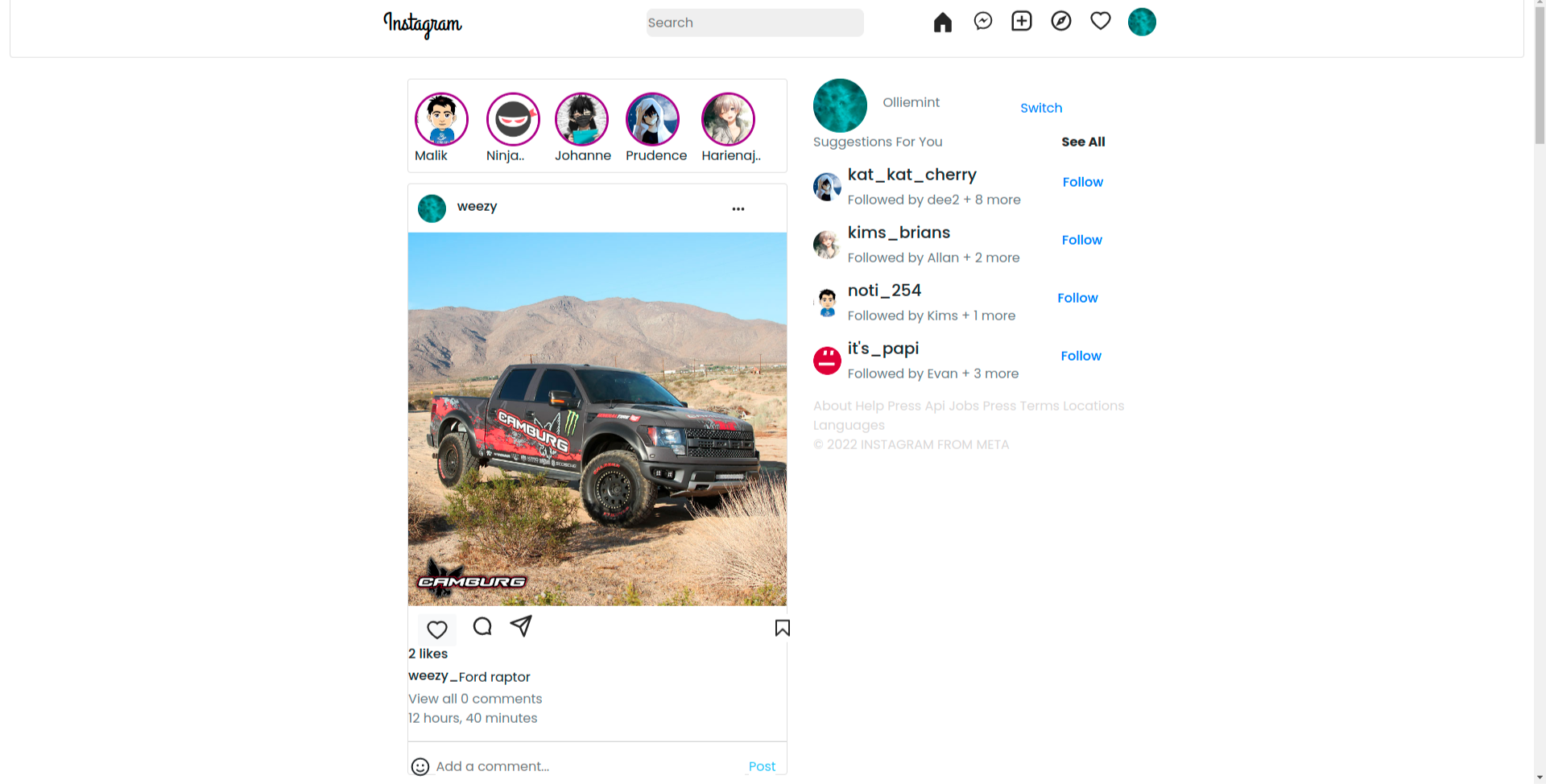Site link https://nectifyinsta.herokuapp.com/
This project is an instagram clone from original photo sharing app by meta. The features used for this project are similar to the ones of the actual platform. The future plans will include stories and reels
The user is able to;
-
Sign in to the application to start using it
-
Upload photos to the applicaion
-
See their profile with all their pictures
-
Follow other users and see their pictures on the user's timeline
-
Like a picture and leave a comment on it
These instructions will get you a copy of the project up and running on your local machine for development and testing purposes. See deployment for notes on how to deploy the project on a live system.
These are the things you need to install the software and how to install them
virtual enviroment:
$ clonenv
or
$ python3 -m venv virtual ( or your selected virtual enviroment name )
- Make sure you have a stable internet to have the ability to clone the repository.
- Type the following command in your terminal to clone this repository
git clone https://github.com/Olliemint/Insta-clone.git
When you run the commands successfully, you should have a local version of this repository.
- Make sure you have a stable internet for forking this repository.
- According to the license, you can fork this project. You need to click on the forking icon and it will be added as one of your repositories
Feel free to fork the project and have fun with it. Happy coding!
To get a development env running, you simply need the install all the packages reguired from either a requirements.txt file or a pipfile. First you need to activate your virtual environment
$clonenv
of
$ source virtualenvname/bin/activate
after that, install all the required depencencies
$ pipenv install //pretty much takes care of installing all depencies for you
After this, you can run the application using the commands that come in the make file. for this case, it is either of the following:
$ make
or
$ make run
or
$ python manage.py runserver
If you want to run tests for the entire project, you need only run this command:
$ make test
or
$ python manage.py test
- JavaScript
- Django
Copyright (c) Olliemint - MIT Licence
- Twitter - @K-720
